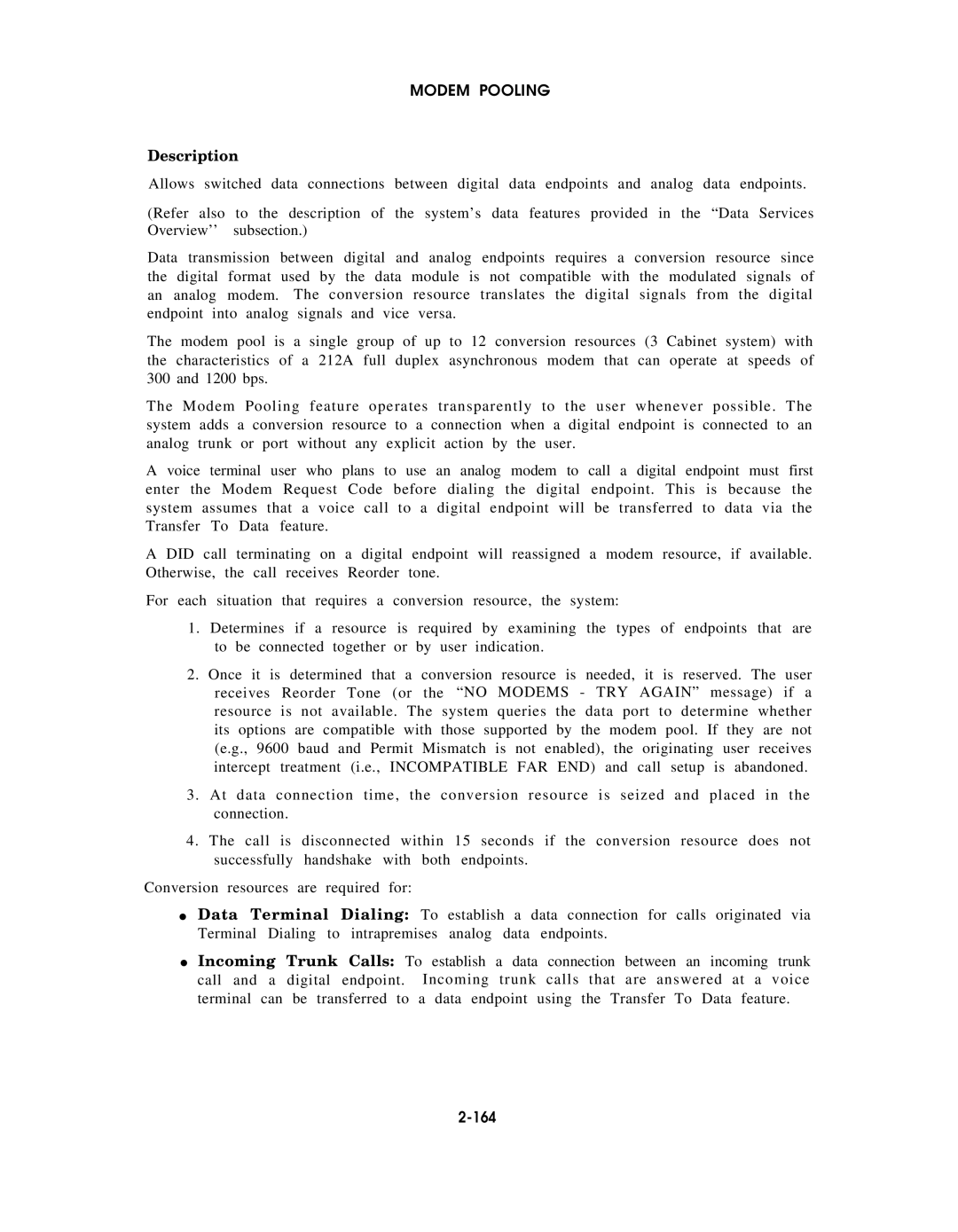MODEM POOLING
Description
Allows switched data connections between digital data endpoints and analog data endpoints.
(Refer also to the description of the system’s data features provided in the “Data Services Overview’’ subsection.)
Data transmission between | digital and analog | endpoints | requires a conversion resource since | |||
the digital format used by | the data module is | not compatible with | the modulated | signals of | ||
an analog modem. | The conversion resource | translates | the digital | signals from | the digital | |
endpoint into analog | signals | and vice versa. |
|
|
|
|
The modem pool is a single group of up to 12 conversion resources (3 Cabinet system) with the characteristics of a 212A full duplex asynchronous modem that can operate at speeds of 300 and 1200 bps.
The Modem Pooling feature operates transparently to the user whenever possible. The system adds a conversion resource to a connection when a digital endpoint is connected to an analog trunk or port without any explicit action by the user.
A voice terminal user who plans to use an analog modem to call a digital endpoint must first enter the Modem Request Code before dialing the digital endpoint. This is because the system assumes that a voice call to a digital endpoint will be transferred to data via the Transfer To Data feature.
A DID call terminating on a digital endpoint will reassigned a modem resource, if available. Otherwise, the call receives Reorder tone.
For each situation that requires a conversion resource, the system:
1. Determines if a resource | is | required | by examining the types of endpoints that are |
to be connected together | or | by user | indication. |
2.Once it is determined that a conversion resource is needed, it is reserved. The user receives Reorder Tone (or the “NO MODEMS - TRY AGAIN” message) if a resource is not available. The system queries the data port to determine whether
its options are compatible with those supported by the modem pool. If they are not (e.g., 9600 baud and Permit Mismatch is not enabled), the originating user receives intercept treatment (i.e., INCOMPATIBLE FAR END) and call setup is abandoned.
3. At data connection time, the conversion resource is seized and placed in the connection.
4.The call is disconnected within 15 seconds if the conversion resource does not successfully handshake with both endpoints.
Conversion resources are required for:
●Data Terminal Dialing: To establish a data connection for calls originated via
Terminal Dialing to intrapremises analog data endpoints.
●Incoming Trunk Calls: To establish a data connection between an incoming trunk call and a digital endpoint. Incoming trunk calls that are answered at a voice terminal can be transferred to a data endpoint using the Transfer To Data feature.
